
In the sphere of Microsoft Dynamics Solution Architects, the competition to attract top talent is intense. This analysis delves into the specifics of a real-world job vacancy for a Microsoft Dynamics 365 Solution Architect and contrasts it with an envisioned benchmark, focusing on key areas such as technological requirements, working conditions, and benefits.

About the Employer & Dynamics 365 Solution Architect Expert Needed
The employer company is a leader in the timber and forest products industry, pioneering in sustainability and technological innovation. Founded over a century ago, it has a rich history of environmental stewardship, evidenced by its early adoption of sustainable practices since the 1930s. The organization is committed to modernizing its operations through digital transformation, integrating cutting-edge technologies like Microsoft Dynamics 365 and SAP ERP systems. It places a strong emphasis on employee growth, offering competitive compensation, comprehensive benefits, and opportunities for professional development. This company stands out for its dedication to managing forests sustainably while leveraging technology to stay at the forefront of the industry.
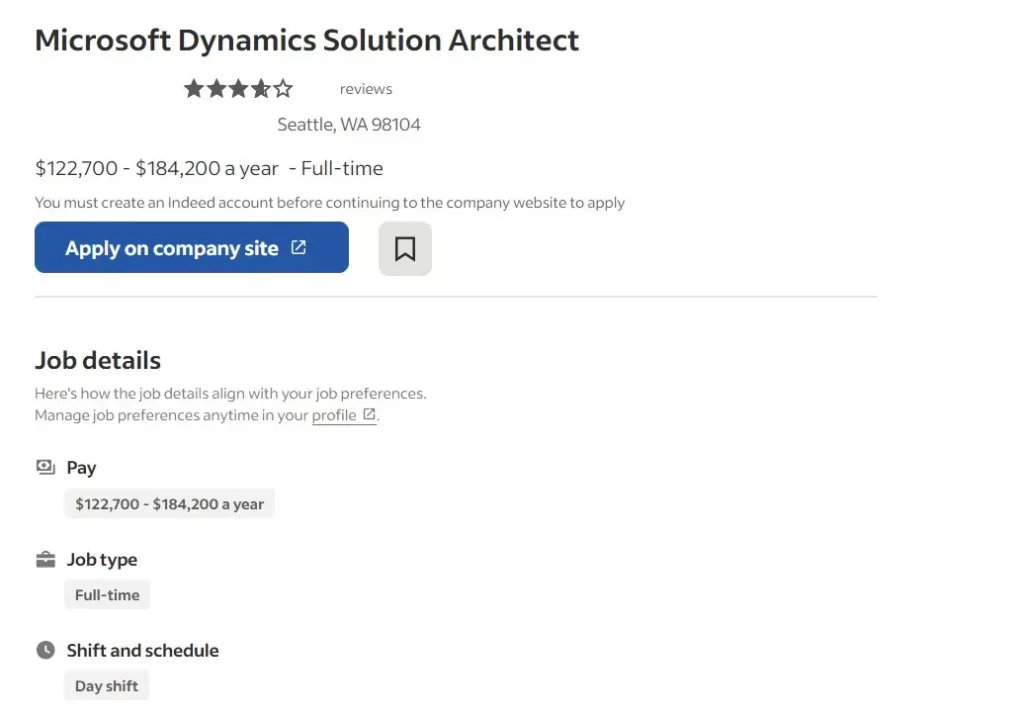

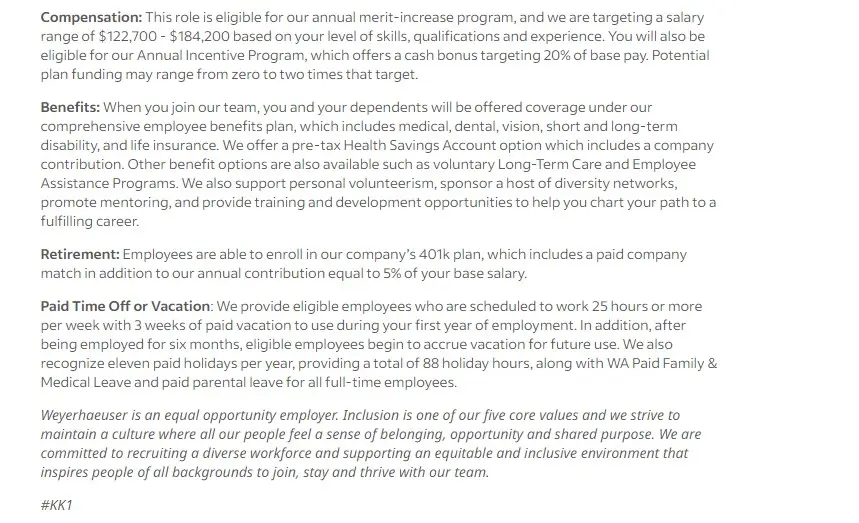
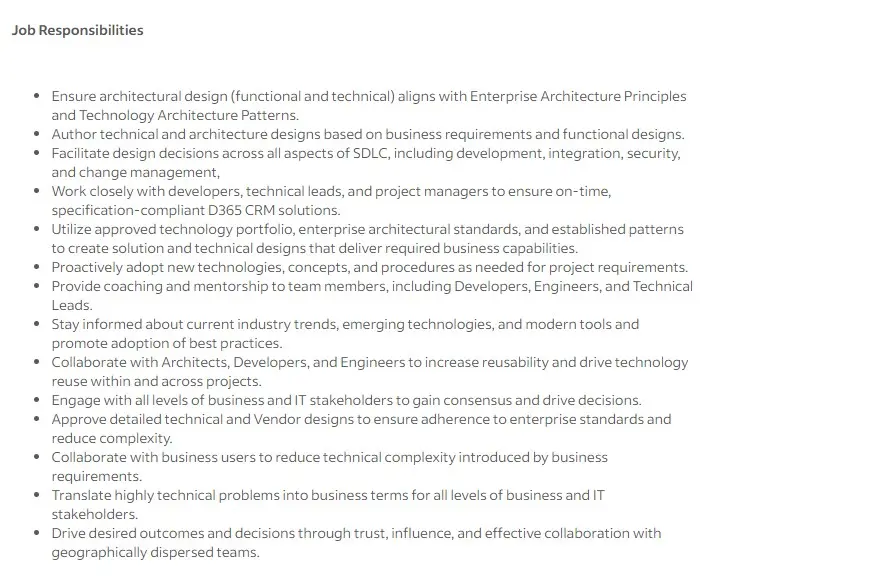
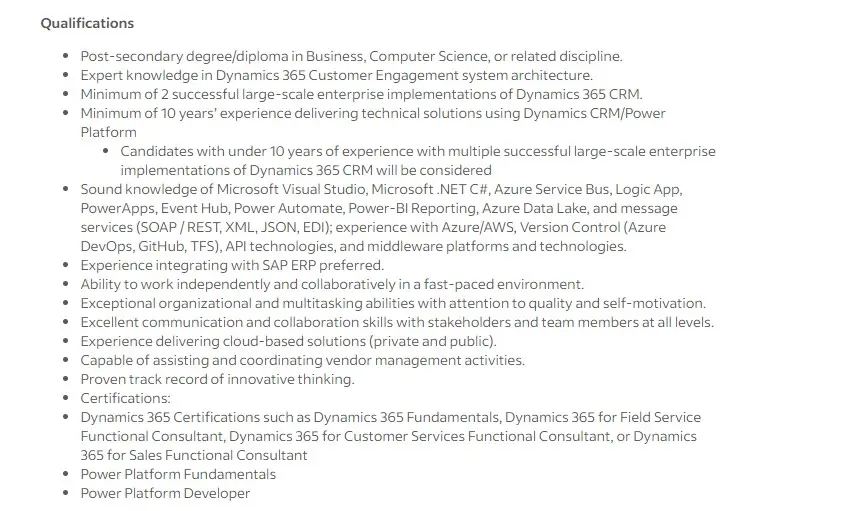
Technological Proficiency: The Bedrock of the Microsoft Dynamics Solution Architect Role
The vacancy for a Microsoft Dynamics Solution Architect spotlights a deep focus on Dynamics 365 Customer Engagement, a cornerstone in managing customer interactions effectively. The emphasis on Dynamics CRM/Power Platform suggests a versatile skill set that merges customer relationship management with robust application development capabilities. The inclusion of Microsoft .NET C#, Azure Service Bus, and various Azure tools underscores the need for expertise in a broad spectrum of Microsoft technologies, essential for creating integrated and seamless IT architectures.
Moreover, the demand for experience in SOAP/REST, XML, JSON, and EDI demonstrates the necessity for a Microsoft Dynamics Solution Architect to master data exchange standards and interoperability within enterprise systems. The proficiency in cloud services, indicated by the mention of Azure/AWS, and version control systems like Azure DevOps, highlights the need for a well-rounded skill set in modern cloud and development practices.
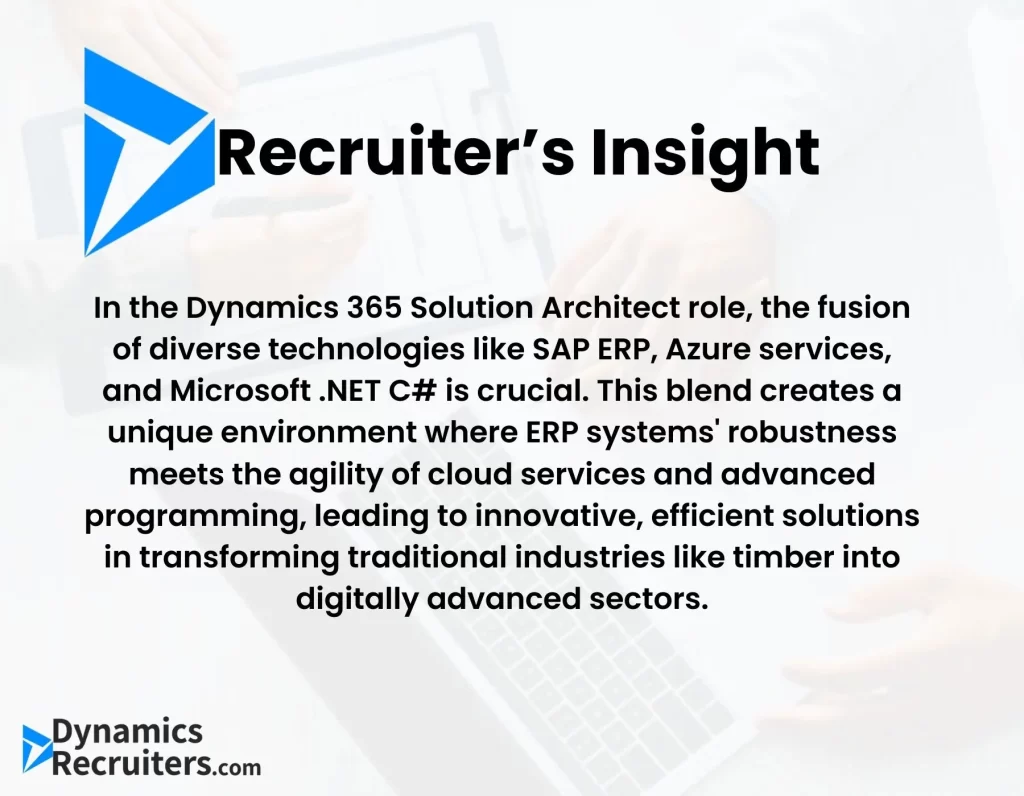
How Could It Be Better?
An ideal Microsoft Dynamics Solution Architect role would expand on these technical skills, fostering a culture of continuous learning and adaptation to new and emerging Microsoft technologies. This approach prepares a Microsoft Dynamics Solution Architect not only to address current project needs but also equips them for future technological advancements, a crucial aspect for a forward-thinking company.
Working Conditions and Culture: Creating an Optimal Environment for Dynamics 365 Solution Architect
The job description for a Microsoft Dynamics Solution Architect in the real-world scenario suggests a dynamic work setting but lacks clarity on remote or hybrid working options, a potential drawback in today’s flexible work culture. The vacancy emphasizes teamwork and stakeholder engagement, indicative of a collaborative yet potentially conventional workplace environment.
How Could It Be Better?
For a Microsoft Dynamics Solution Architect, the ideal scenario would include explicit options for remote, on-site, and hybrid working models, catering to diverse preferences and lifestyles. A culture that values transparent communication, supportive leadership, and team collaboration would be ideal for a Microsoft Dynamics Solution Architect, fostering a sense of community and belonging.
Benefits and Compensation: Aligning with Market Expectations
The real-world Microsoft Dynamics Solution Architect vacancy offers a competitive salary range ($122,700 – $184,200), aligning with US market standards. While it includes performance bonuses and a comprehensive health package, it stops short of detailing wellness and professional development benefits.
How Could It Be Better?
A top-tier Microsoft Dynamics Solution Architect role would ideally offer a slightly higher salary range, reflecting the value of a broader skill set and expertise. Comprehensive health benefits, mental health support, and explicit emphasis on professional development, including budget allocations for conferences and certifications, would be key. Generous PTO, parental leave, and family-friendly policies would round out the benefits, making the role highly attractive to potential candidates.
Professional Dynamics 365 Recruiter Advice: Enhancing the Vacancy to Attract Top Microsoft Dynamics 365 Solution Architect Talent
To attract the best candidates for the Microsoft Dynamics 365 Solution Architect role, there are several key areas where the real-world job vacancy can be improved. Drawing from my expertise as a Dynamics 365 recruiter, here are some recommendations:
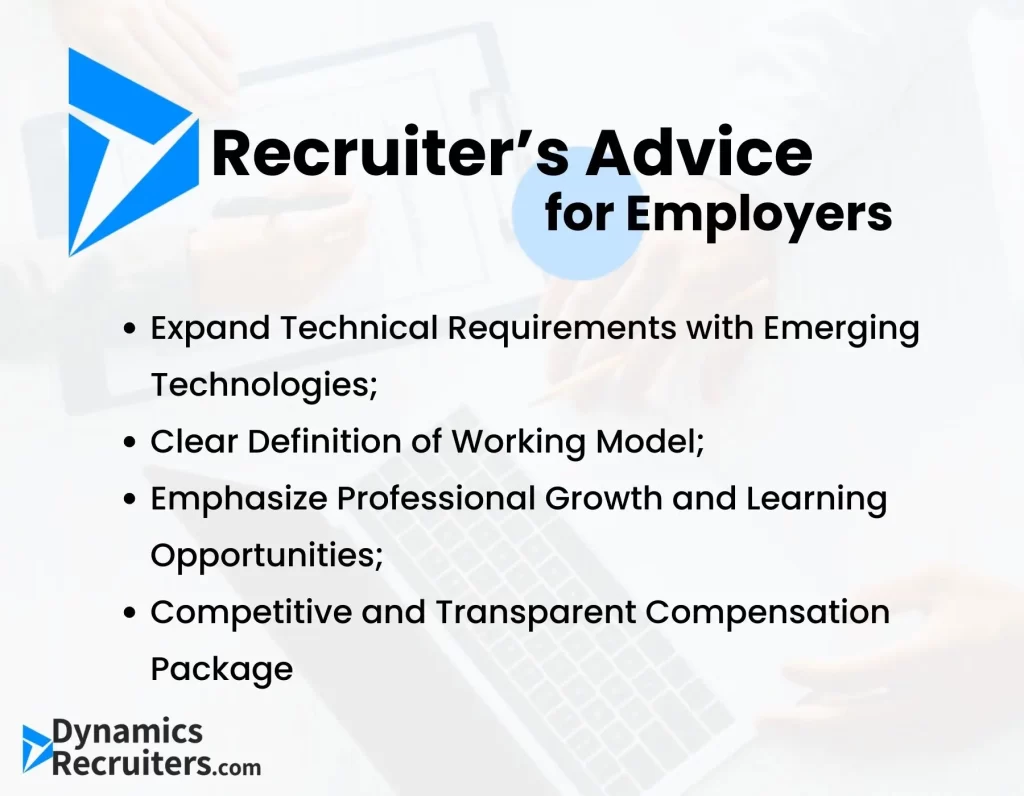
1. Expand Technical Requirements with Emerging Technologies
While the vacancy lists essential Dynamics 365 modules and related Microsoft technologies, incorporating emerging or advanced technologies can be a game-changer. Adding requirements for newer Dynamics 365 modules or advanced areas like AI integration, IoT within Dynamics ecosystems, or advanced analytics can attract candidates who are not only skilled but also keen on working at the cutting edge of technology.
2. Clear Definition of Working Model
The current job market highly values flexibility. The vacancy should explicitly state whether it offers remote, hybrid, or on-site working options. Clarifying this can attract a broader pool of candidates, including those who prefer or require remote working options due to their personal circumstances or location.
3. Emphasize Professional Growth and Learning Opportunities
Candidates often seek roles where they can grow professionally. The vacancy should emphasize opportunities for continuous learning, such as access to the latest Dynamics 365 certifications, sponsored attendance at relevant conferences, and a clear path for career progression within the organization.
4. Enhance Work Culture Description
A more detailed description of the company culture, emphasizing a collaborative, innovative, and inclusive work environment, can be very appealing. Mentioning specific initiatives like team-building activities, innovation labs, or community involvement can give candidates a clearer picture of the company’s values and work environment.
5. Competitive and Transparent Compensation Package for Dynamics 365 Solution Architect
While the salary range is competitive, being more transparent about how salaries are determined and what factors could lead to the higher end of the salary range can be beneficial. Additionally, enhancing the benefits package with specifics like health and wellness programs, mental health support, and family-friendly policies (such as flexible hours for parents) would make the vacancy more attractive.
6. Highlight Company’s Commitment to Sustainability and Innovation
Given the company’s focus on the timber industry and sustainability, highlighting how the role of a Microsoft Dynamics 365 Solution Architect contributes to these goals can attract candidates who are passionate about environmental sustainability and want to work for a company that aligns with their values.
7. Personalization in Job Description
Adding a personal touch to the job description, perhaps a message from the team or a recent success story can make the vacancy more relatable and engaging. This approach can create a connection with potential candidates, making them feel like they are applying to be part of a community, not just a company.
Evaluating the Dynamics 365 Solution Architect Role: A Comprehensive Analysis for Potential Candidates
The role of a Dynamics 365 Solution Architect stands out as a beacon of opportunity and challenge. This position, with its unique blend of responsibilities and qualifications, demands a thorough examination to aid potential candidates in making an informed career decision.
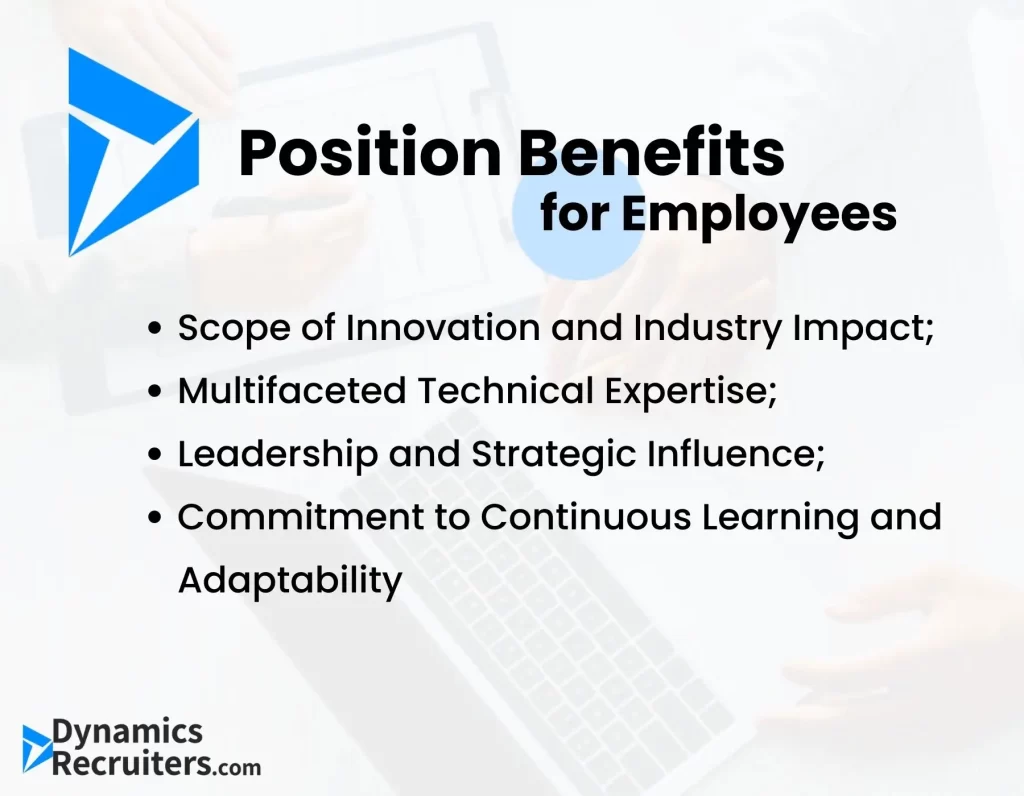
Scope of Innovation and Industry Impact
The role emphasizes developing innovative solutions in cloud technology, specifically within the forest products industry, presenting an unparalleled chance to contribute to an industry’s digital transformation. This not only aligns with the growing trend of cloud computing but also offers a unique niche in an industry not typically associated with high-tech innovation.
Multifaceted Technical Expertise
The position requires expertise in Dynamics 365 Customer Engagement system architecture, coupled with experience in SAP ERP integration and a broad knowledge of various Microsoft technologies. This indicates a role rich in opportunities for those who possess a diverse technical skill set and are eager to apply it in complex, multi-system environments.
Leadership and Strategic Influence
The role involves facilitating design decisions across the SDLC, coaching team members, and engaging with stakeholders at all levels. This suggests that the position is not just technically demanding but also requires strong leadership and strategic thinking capabilities, ideal for those looking to expand their influence and leadership skills in tech.
Commitment to Continuous Learning and Adaptability
The expectation to stay informed about industry trends and adopt new technologies reflects the dynamic nature of this role. It’s suited for individuals who thrive in environments that require continuous learning and adaptation, ensuring they remain at the forefront of technological advancements.
This Dynamics 365 Solution Architect role offers a unique blend of technical challenges, industry impact, leadership opportunities, and continuous learning. It is an ideal fit for those seeking to combine their technical expertise with strategic influence in an innovative and dynamic environment. The role not only promises personal and professional growth but also the chance to be part of a pioneering journey in transforming a traditional industry with modern technology.
Conclusion
The comparison highlights that the real-world vacancy for a Microsoft Dynamics Solution Architect offers a solid foundation in terms of technological expertise and competitive compensation. However, it could enhance its appeal by incorporating more flexible working conditions and a broader benefits package, as envisioned in the benchmark scenario. Such enhancements would not only meet the technical and professional requirements of a Microsoft Dynamics Solution Architect but would also align with the evolving preferences and needs of top professionals in this field. This analysis serves as a guideline for employers to refine their offerings, ensuring they attract and retain the best Microsoft Dynamics Solution Architect talent in a competitive market.


 Next Post
Next Post